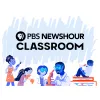Take a look inside 8 images
PBS NewsHour Classroom
Pros: Timely lessons featuring videos, discussion questions, and some interactive activities.
Cons: Many lessons lack age/grade guidelines, and some topics might upset younger users.
Bottom Line: There's a wide variety of current, credible, and high-quality content on this site that should support interesting classroom discussions.
PBS NewsHour Classroom’s lesson plans and supplemental resources are outstanding and clever. They all emerge out of real world media and examples, and many connect to history. The Daily Video Lessons offer a go-to spot to structure a sensible discussion around topics that might have students buzzing. Beyond the provided lesson plans, there are many videos with resources to help students process what they’re watching — like an essential question and key vocabulary as well as discussion questions to kick off post-viewing conversations. Plus, many of the lesson plans are tied to STEM-related issues, so they’re ideal for cross-curricular collaboration. Teachers can also plug in and participate in the Classroom Voices feature, which discusses issues impacting the classroom and profession.
For journalism, media studies, or ELA classes, make sure to check out the students voices samples in the Classroom Voice section. They’d serve as great models for editorial writing. For classrooms that want do dive deeper into media creation and production, Student Reporting Labs and Storymaker websites have a great curriculum and supporting resources, including video tutorials for things like audio recording and lighting. Finally, teachers who want to engage their kids in investigative journalism can introduce them to the interactive Journalism in Action site.
PBS NewsHour Classroom is a website that provides news for students and resources for teachers. An offshoot of the daily TV program PBS NewsHour, it presents middle and high-school students with tools and resources to help them make sense of current and historical events. The site is divided into drop-down sections: Daily News Lessons, Subjects, Lesson Plans, Classroom Voices, and Journalism in Action.
Daily News Lessons include news videos, transcripts, supporting links, focus questions, and an extension activity, such as a Kahoot quiz or additional reading suggestions. All of these daily lessons can be browsed and re-used as needed. The Subjects section collects these daily lessons as well as other resources. The Lesson Plans section has a massive collection of fully fleshed out learning experiences on a variety of topics spanning social studies, media literacy, STEM, arts, and more. The Classroom Voices section curates essays, articles, videos, and discussions from teachers and students in the PBS community.
To see how this tool works, watch our video overview of PBS NewsHour Classroom.
Students can learn about current events, social issues, and other hot topics via PBS NewsHour Classroom’s daily-updated videos, articles, and lessons. The site covers a wide range of current and historical content, from life after a wrongful conviction to Holocaust remembrance. Students will learn how to form opinions on controversial subjects, examine how news stories develop, and develop skills to spot misinformation and disinformation online. They can also learn the history and basics of journalism from the Journalism in Action as well as get the skills and techniques necessary to make journalistic media via Student Reporting Labs. No matter the experience, students get well-rounded perspective on topics paired with relevant context. Particularly engaged students can also contribute ideas, perspective, and reporting that might make it on the site.
Students who might find the regular PBS NewsHour boring will be pleasantly surprised -- but maybe not blown away -- by PBS NewsHour Classroom. It covers the same issues, but it makes the content livelier and more classroom-friendly. The site shares news in a straightforward manner and takes students’ perspectives into consideration without over-simplifying. However, it could do a bit more to increase accessibility.
The site's also lacking adequate content filtering. The topics covered are as varied as the news of the day, so teachers of younger middle school children will want to be aware that students might stumble on upsetting or controversial topics such as mass shootings or abortion rights if viewing content on the site itself.

















